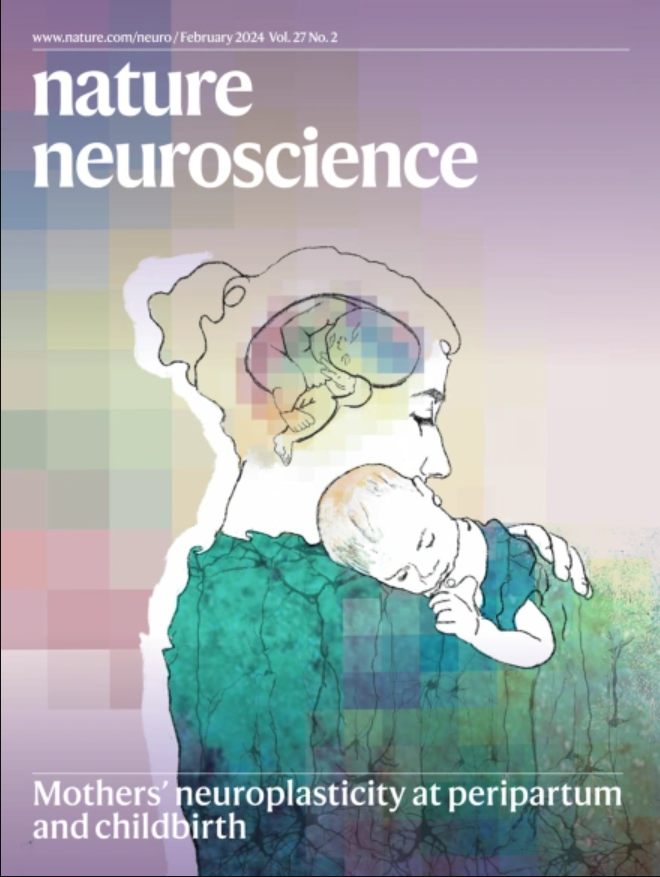Heat shock proteins function as signaling molecules to mediate neuron–glia communication in C. elegans during aging
IF 20
1区 医学
Q1 NEUROSCIENCES
引用次数: 0
Abstract
The nervous system is primarily composed of neurons and glia, and the communication between them has profound roles in regulating the development and function of the brain. Neuron–glia signal transduction is known to be mediated by secreted signals through ligand–receptor interactions on the cell membrane. Here we show a new mechanism for neuron–glia signal transduction, wherein neurons transmit proteins to glia through extracellular vesicles, activating glial signaling pathways. We find that in the amphid sensory organ of Caenorhabditis elegans, different sensory neurons exhibit varying aging rates. This discrepancy in aging is governed by the cross-talk between neurons and glia. We demonstrate that early aged neurons can transmit heat shock proteins to glia via extracellular vesicles. These neuronal heat shock proteins activate the glial IRE1–XBP1 pathway, leading to the transcriptional regulation of chondroitin synthases to protect glia-embedded neurons from aging-associated functional decline. Therefore, our studies unveil a new mechanism for neuron–glia communication in the nervous system and provide new insights into our understanding of brain aging. Glia–neuron interactions are highly complex. Glial cells can sense and modulate different aspects of neuronal activity. Here in Caenorhabditis elegans, the authors show that early aged sensory neurons can transfer proteins via extracellular vesicles to AMsh glia, inducing neuroprotection during aging.


热休克蛋白作为信号分子介导秀丽隐杆线虫衰老过程中神经元-胶质细胞间的通讯
神经系统主要由神经元和神经胶质组成,它们之间的交流在调节大脑的发育和功能方面具有深远的作用。神经元-胶质细胞信号转导是通过细胞膜上的配体-受体相互作用分泌信号介导的。在这里,我们展示了神经元-胶质细胞信号转导的新机制,其中神经元通过细胞外囊泡将蛋白质传递给胶质细胞,激活胶质信号通路。我们发现在秀丽隐杆线虫(Caenorhabditis elegans)的两栖感觉器官中,不同的感觉神经元表现出不同的衰老速度。这种衰老的差异是由神经元和神经胶质之间的相互作用所控制的。我们证明了早期衰老的神经元可以通过细胞外囊泡将热休克蛋白传递给胶质细胞。这些神经元热休克蛋白激活神经胶质IRE1-XBP1通路,导致软骨素合成酶的转录调节,以保护嵌入神经胶质的神经元免受衰老相关功能下降的影响。因此,我们的研究揭示了神经系统中神经元-胶质细胞交流的新机制,并为我们对大脑衰老的理解提供了新的见解。
本文章由计算机程序翻译,如有差异,请以英文原文为准。
求助全文
约1分钟内获得全文
求助全文
来源期刊

Nature neuroscience
医学-神经科学
CiteScore
38.60
自引率
1.20%
发文量
212
审稿时长
1 months
期刊介绍:
Nature Neuroscience, a multidisciplinary journal, publishes papers of the utmost quality and significance across all realms of neuroscience. The editors welcome contributions spanning molecular, cellular, systems, and cognitive neuroscience, along with psychophysics, computational modeling, and nervous system disorders. While no area is off-limits, studies offering fundamental insights into nervous system function receive priority.
The journal offers high visibility to both readers and authors, fostering interdisciplinary communication and accessibility to a broad audience. It maintains high standards of copy editing and production, rigorous peer review, rapid publication, and operates independently from academic societies and other vested interests.
In addition to primary research, Nature Neuroscience features news and views, reviews, editorials, commentaries, perspectives, book reviews, and correspondence, aiming to serve as the voice of the global neuroscience community.
 求助内容:
求助内容: 应助结果提醒方式:
应助结果提醒方式:


